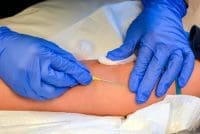The enormity of this unprecedented, global pandemic cannot be overstated—the COVID-19 virus has sent shockwaves across the globe. No sector of the U.S. economy, no socioeconomic strata, and no human life has been spared from extraordinary change. Most staggering is the loss of human life and the overwhelming realization that life is fragile and fleeting.
The crisis has struck at the core of Institutions of Higher Education (IHEs) and separated up-and-coming nursing students from their educational support mechanisms. The pandemic certainly presents nursing education with many immediate challenges. As we work together to ensure a continued supply of highly competent nurse leaders, we will face much adversity. Although we may face strife and struggle to support student success, we will emerge a much more innovative, resilient, and prepared academy.
The vast majority of IHEs have already elected to suspend in-person classes through the end of the spring semester. This decision, made to protect the public and to flatten the curve, forced countless educators and students to swiftly adapt to online coursework and to develop new teaching modalities and learning strategies. In the midst of this overnight transition, it’s easy to be overwhelmed by the rapidity and volume of work that each of us is facing. Nonetheless, we cannot overlook the opportunities that this presents to advance nursing education. There are many strongly held traditions, standards, and sacred cows from which we have not been able to walk away; however, this pandemic forces us to find ways to innovate and expand our understanding of the unlimited possibilities within nursing education. Sometimes we have to be thrown from our comfort zones to grow and transform.
Two areas we can look to for opportunities are technology and student support.
Embracing technology
High-quality clinical placements and patient interactions are critical components of nursing education. Nevertheless, many clinical sites have been forced to close their doors to nursing students, in the interest of student and public safety. This decisive action, while appropriate and necessary, not only impedes the progress of nursing students, but it also takes away from the pool of bedside care providers; student nurses contribute greatly to the provision of care in hospital and community health settings. As a result, educators find themselves in an awkward embrace with modalities that many of us had previously scoffed at and turned our backs on. The forced expansion and adoption of virtual reality, telehealth, and simulation will have profound effects on the manner in which we prepare our nursing workforce for many years to come. While educators need to ensure that they are adhering to best practices and the rules and regulations set forth by regulatory bodies, we are encouraged to adapt and enhance our appreciation for an evolving digital panacea.
As the Covid-19 outbreak transformed into a global pandemic, many educational and research conferences were cancelled entirely while others have been postponed. With these cancellations, came the squashed aspirations of countless students who were looking forward with excitement to their first opportunity to present posters or to stand at the podium and share their hard work with colleagues. Yet, with this disappointment, we have seen the proliferation of virtual meetings to expanded audiences. Virtual research and scholarship symposiums will serve as mechanisms to connect leading academic researchers, clinicians, and scientists across the globe. New collaborations and relationships will emerge to accelerate shared research agendas and further disseminate rapid cycle change projects that are transforming healthcare outcomes.
Student support
The academy has certainly made impressive strides to recruit a more diverse student body and to appeal to a broader cadre of potential students. While there is much work to be done in this realm, we need to ensure that we are ready to support all students who come to us with their own unique stories and circumstances. This pandemic has undoubtedly highlighted the importance of student services. How many of us can truly say that we have excellent support services for the traditional and online learner? As we advocate for increased access to mental health and fully integrated holistic care models for our patients, have we ensured these provisions are in place for our students? As all of us are forced into a different pace of life with new fears and threats, perhaps we can take a step back and remember why we do what we do. Reconnecting with our passion and purpose will help us to be found in our duty to protect, promote, and optimize the health and abilities of our fellow nurses and students. We are so blessed to be able to share the profession we love with others.
Looking ahead
It’s no secret that nursing has been the most trusted profession in America for 18 years in a row. Our attention to honesty and ethics is highly appreciated by the American populous. As we hear stories of brave nurses caring for the sick and suffering in spite of the risks, fears, and personal protection equipment shortages, we can’t help but admire our nursing colleagues and other healthcare professionals who are heeding the call to duty. This shared admiration gives birth to renewed optimism that when the next healthcare crisis looms, we will be ready with the largest and most well-prepared nursing workforce that we have ever had in this country. Perhaps, when the virus settles, we will find new partnerships that will allow us to stop turning countless qualified nursing applicants away from their dream of becoming a nurse.
Erik P. Southard is a professor and DNP program director at Indiana State University in Terre Haute.


















